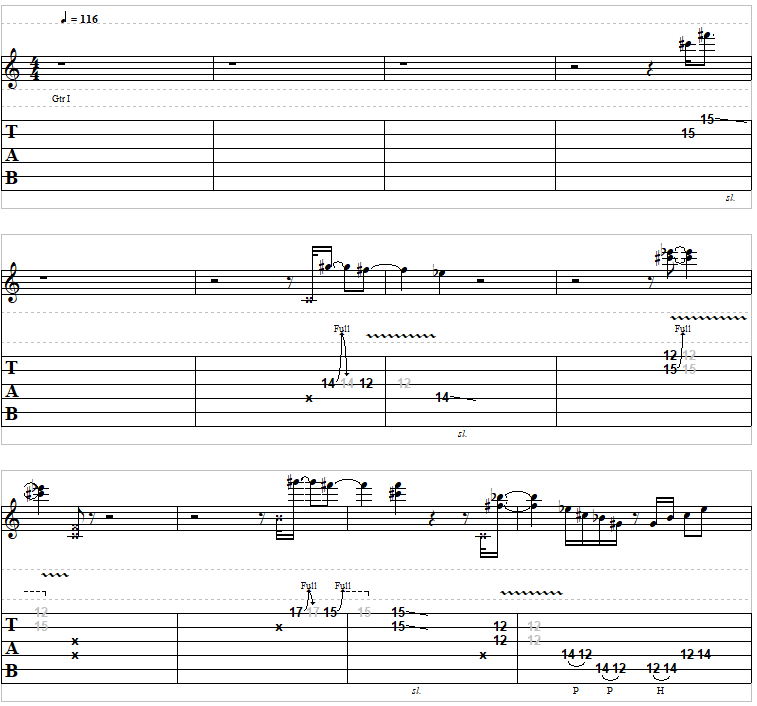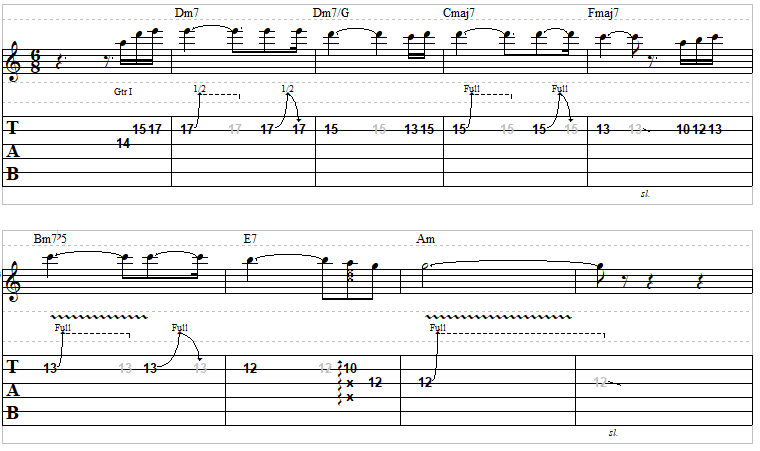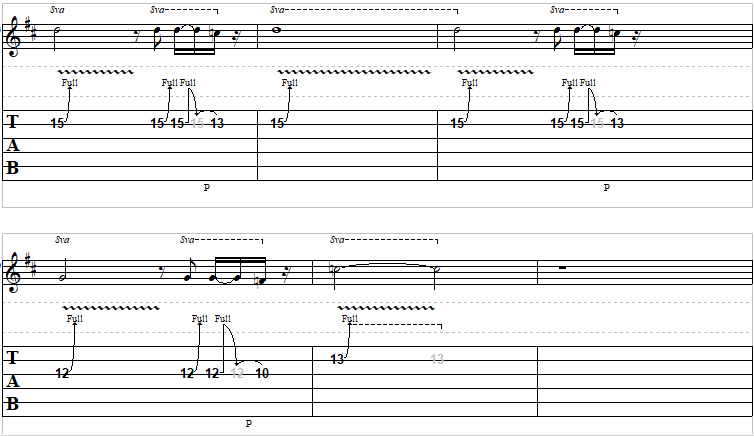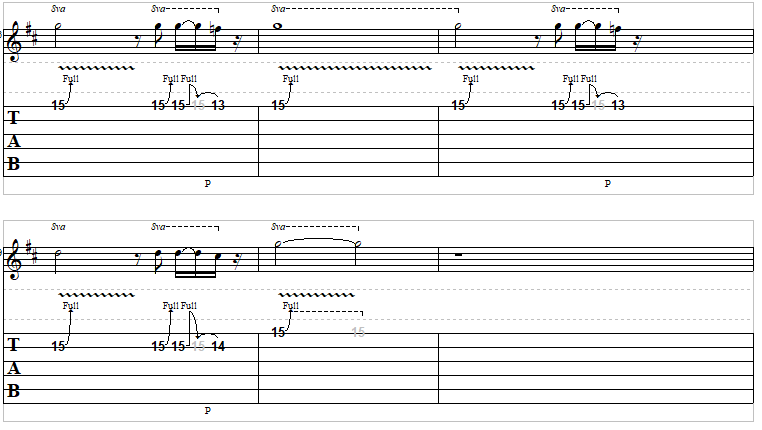
Stairway To Heaven Part 2
In this lesson, we’ll learn the 2nd half of the intro riff that we started in our previous lesson.
If you had trouble with the previous lesson, rest assured, the two measures from this half are actually easier than the previous 2 measures. That’s good news, right?
In the first measure. we’ll be forming a Fmaj7 chord. Use your 3rd finger on the 3rd fret of the D, 2nd finger for the 2nd fret of the G, and 1st finger for the 1st fret of the B string. The high E will be picked open. This chord formation lasts the entire measure, too. The picking pattern is slightly different, too.
Hawaii Five-O 2


Dust In The Wind pt. 2

The Weight 5 (Post-Chorus Instrumental Refrain)

Come Together Solo pt. 2
Still Got The Blues 2

Come Together – Complete Solo
Come Together PDF
Sunshine Of Your Love- Cream



